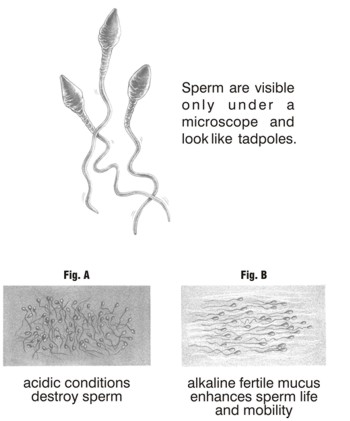understanding your fertility, page 2 of 14
A Simple View of Male Fertility

A man begins to produce sperm in early adolescence, and normally continues to do so throughout his entire life.
In this illustration we see a simplified view of a man’s reproductive system. Inside each testicle is a metre of tubules where sperm are produced, at an estimated rate of a thousand per second.
Once produced, the sperm work their way along the tubules towards the epididymis in each testicle, where they are stored and matured. During intercourse they are propelled rapidly out along the vas deferens tubes, past the bladder and the seminal vesicles.
They enter the prostate gland, where they combine with fluids called “seminal fluid” before travelling along the urethra and out of the penis.
The total content of the ejaculation measures about 5 mls. (a teaspoonful), but it can contain between 1 - 400 million sperm.
Sperm Life - Key to Fertility

Sperm swim like tadpoles, by vigorous movement of their tails. Once ejaculated from the man, their life-span is affected by acid or alkaline conditions.
In acid conditions sperm clump together and are destroyed within minutes, maximum life a couple of hours. (Fig. A)
In alkaline conditions they thrive, swim vigorously and can live for several days. (Fig. B)
It is surprising to learn that a woman’s vagina is acidic for much of her monthly cycle - to fight bacteria. There is only a short time leading up to ovulation when a unique secretion makes the vagina alkaline and able to support sperm life. These alkaline days are the only days when pregnancy is possible.
Once couples learn to recognise the acid and alkaline phases of the woman’s cycle, they can plan their family naturally, simply by planning or avoiding intercourse in the alkaline fertile phase of the cycle.
- Previous |
- Next |
- Exit Tutorial |
- Help |
- Download as a PDF
© 2007 Fertility Education Trust